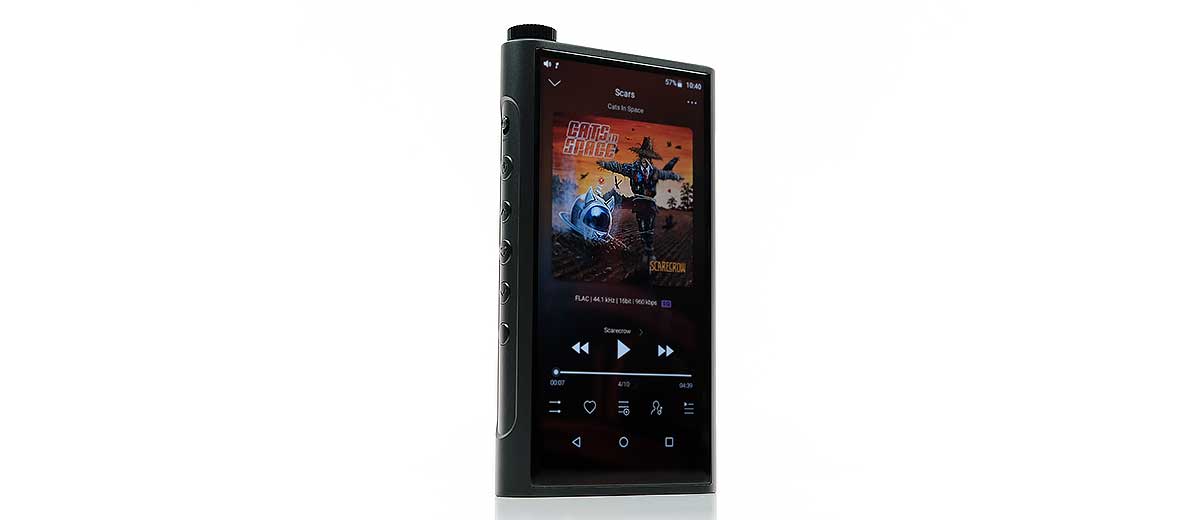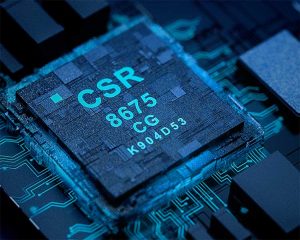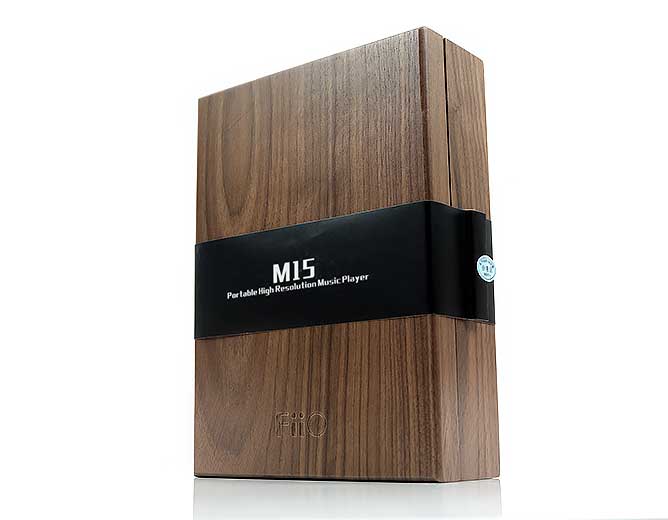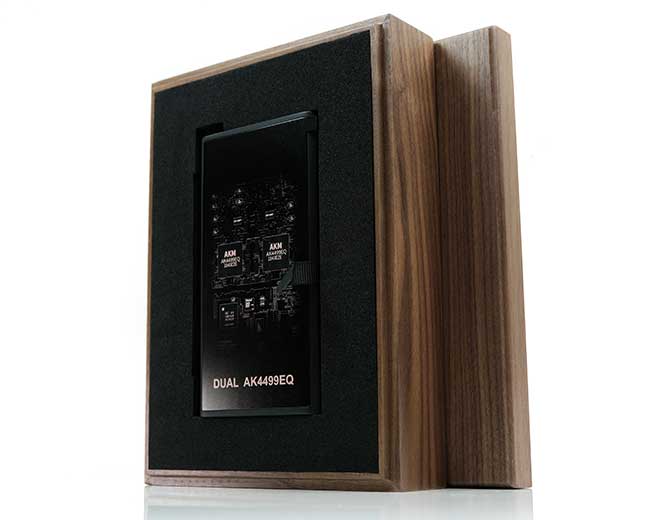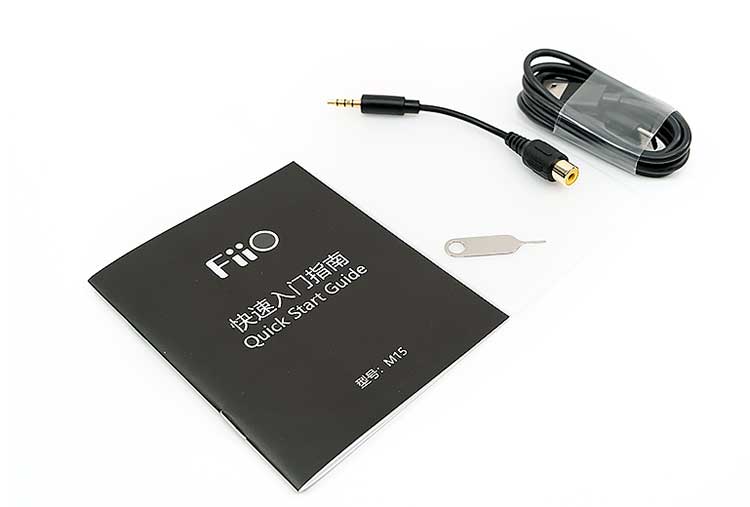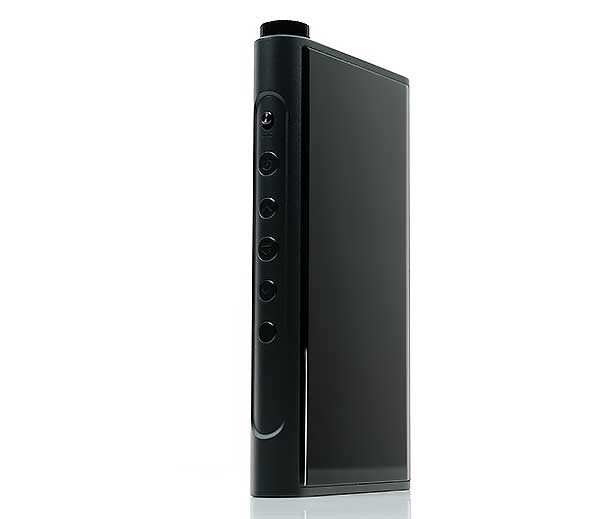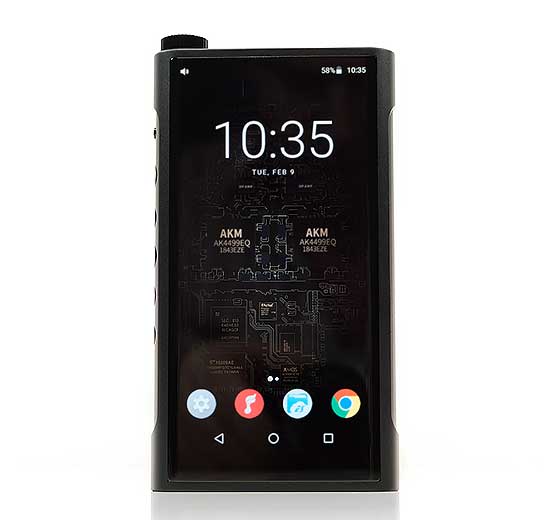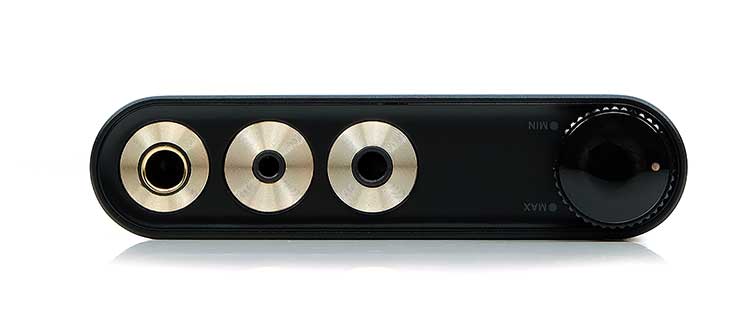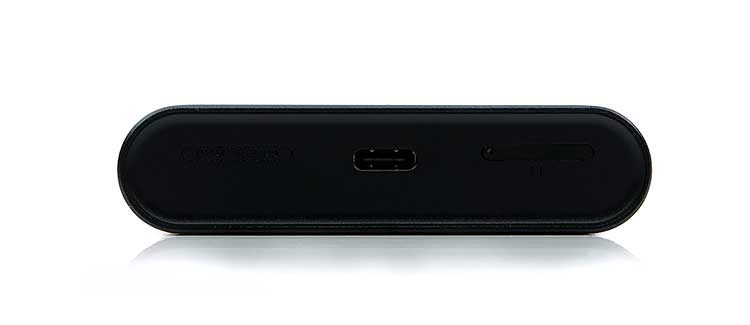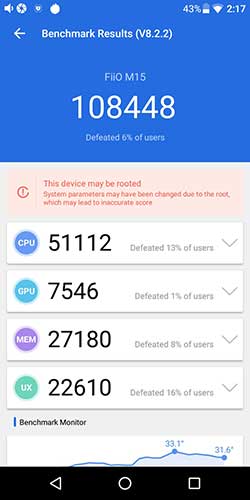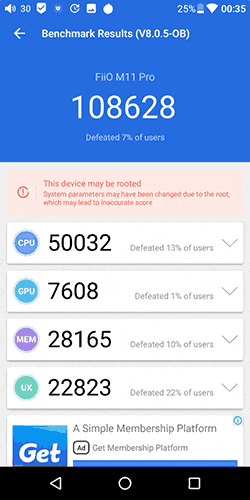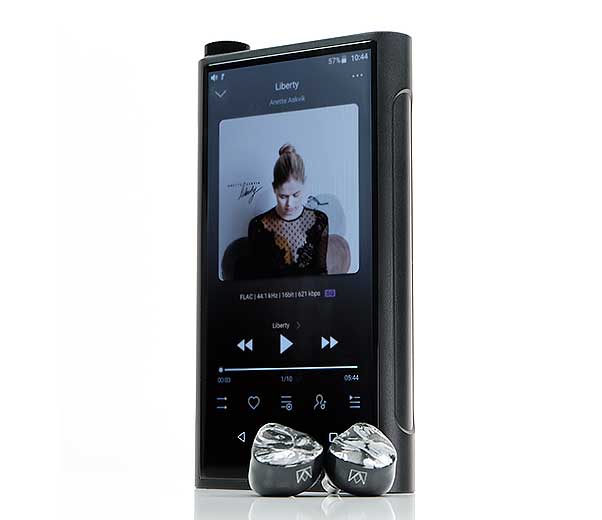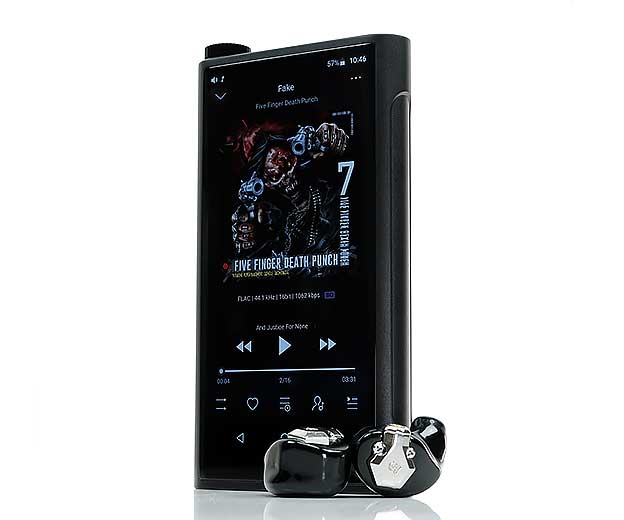The FiiO M15 is the company’s flagship digital media player featuring dual AK4499EQ DACs, MQA 8x Decoding, and LDAC Bluetooth capability. It is priced at $1,299.99.
Disclaimer: The FiiO M15 sent to us is a sample in exchange for our honest opinion. We thank FiiO for this opportunity.
To learn more about FiiO reviews on Headfonics you can click here.
You can now find the main review of the M15 with scores published here.
I remember when FiiO first launched the original X7 flagship back in 2015. At the time FiiO CEO, James Chung, mentioned that the X7 was really an exercise in seeing what they could really do with their knowledge to date and customer feedback.
True enough, there were a ton of requested features in there including a full ES9018 DAC chipset which was unheard of at the time for a portable player. That, plus the amp system, Android, and balanced playback seemed like the X7 was brimming with everything you could want in a player.
Flagship
Roll on 2020 with the launch of their new flagship player, the FiiO M15 and I am laughing. Note because it is funny, or bad or anything. Rather, the tech sheet for the FiiO M15 begs not the question of what did they include but rather what the heck did they leave out? The feature-set is crazy long and almost as if they crammed 10 years of thinking plus everyone else’s thinking into one DAP.
Of course, the price has gone up on the old X7 to $1299. This is right on the cusp of a group of competing players such as the N6ii, DX220 and Lotoo’s PAW 6000 so the bar is set higher than ever. But still, just scroll through that M15 FiiO page and tell me you are not superficially impressed. I know I am.
Tech Inside
I am going to go into a bit more detail in the main review because honestly, the list is just so long I could be here forever.
DAC & Amp
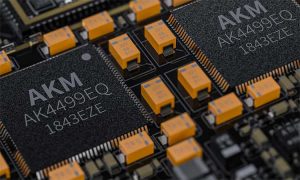
The AKM AK4499EQ was launched a little over 12 months ago but I presume the lead time of the FiiO M15 development it probably meant FiiO were amongst the first adopters of this new flagship chipset. Some are claiming it is probably the best delta-sigma chipset made to date with world-beating low THD+N and high S/N numbers.
Certainly, the FiiO M15 looks competitive on paper with a THD+N of <0.0004% (1kHz/10kΩ) on the line out and >122dB SNR, (balanced) via the amp stage. That’s fairly close to the DX220 AMP 1 MK II numbers and there is some debate if the DX220 is a loaded measurement also.
It is also, on paper, 1-2dB SNR higher than the Cayin N6ii with the A01 and slightly better THD+N numbers to boot. No doubt, on paper, the M11 belongs to be compared to these two DAPs.
MQA 8X
MQA is a thing now with FiiO and not just the 4X native capability previously found on the DX220 but a whopping 8X unfolding capacity. That means we could potentially unfold an MQA file that arrives as 24BIT/48K into a full hi-res 24BIT/384K for playback.
XMOS XUF208
The FiiO M15 can go higher though. The XMOS chipset is now an XMOS XUF208 Control Chip which supports direct decoding 768kHz/32bit and native DSD512 support. The AK4499EQ is in no way gimped from a crappy USB stage on the FiiO M15. Numbers for OTG are lower though at 384K/32BIT and DSD128.
Samsung Exynos 7872
FiiO has retained the same processor setup as the M11, the Samsung Exynos 7872 for all that MQA and codec number crunching. The RAM numbers are also unchanged at 3GB. I honestly have zero complaints about this despite the M11 being much cheaper. It has already been proven to be a supremely capable processor and the fastest we have measured to date for any DAP.
Qualcomm CSR8675 BT
FiiO has ditched the original Samsung chipset from the M11 and gone with a higher-end Qualcomm CSR8675. Codec support is relatively unchanged however with support for SBC, AAC, aptX, aptX-HD, LDAC, and HWA (transmission only). The full two-way capability is as follows:
- Transmit:SBC, aptX, aptX HD, LDAC, HWA
- Receive:SBC, AAC, aptX, aptX LL, aptX HH, LDAC
I believe this is TOTL for Qualcomm BT chips and a bit of research will tell you that it is the same chipset FiiO are using for their EH3 NC noise-canceling headphones because of the built-in NC support. Sadly, I do not have the EH3 NC here to test it, Mike will be reviewing that one very soon.
NDK Femtosecond
FiiO has also brought in a dual heavy-duty Femtosecond oscillator system to work in conjunction with the M15’s 3rd gen FPGA software. I believe this is the first time they have used this type and brand. This brings the FiiO M15 almost on par with the DX220’s excellent 5-Femtosecond oscillator system which I am very fond of.
These types of digital clocks are normally found in desktop DAC’s nevermind portable media players and primarily used for control of jitter.
Unboxing
Well, this is nicer than your average FiiO unboxing experience. I am guessing going flagship they had to come up with something a little more exotic than their normal black or white cardboard packaging.
Now on the outside, the larger than the average Fii) DAP box is nothing overly unusual. It is really on the inside that you get a feel for the flagship vibe with the use of a very nice North American black walnut wood enclosure. Everything is neatly packaged on the inside in the nicest display ensemble I have seen from a FiiO product to date.
The DAP itself is stickered and neatly resting on a top layer of protective foam with the accessory kit boxed just below. What I love is the protective sticker on the screen. Not because it is a cool topology of the inside of the FiiO M15 but rather when you peel it off and turn it on the stock theme is exactly the same as the sticker. Giggity!
Accessories
But oh no, the accessory lineup is missing something really important – a protective case. Yeah, it has screen protectors but no case for a TOTL player out of the box is not ideal. I am going to be babying this looking for the 3rd party equivalent or spending another $50 on the Dignis design FiiO official case? At least a silicone case while any leather case order comes in would be ideal.
Aside from that this is a functional line-up of accessories and nothing special. You get a user manual, a short coaxial converter cable, a pin for the memory card tray, and a USB-C to USB-A charging and data cable.
Design
The FiiO M15 design is both unusual and interesting. My immediate reaction was that it looks like a really large hybrid of the M11 and the smaller Q1 MK11 amp. The analog pot at the top also really differentiates from the previous rotary dial approach of almost every other mid-fi upwards FiiO DAP placing it closer to their portable amp designs.
The FiiO M15 design is also large and a bit on the heavier side at 301g. It is larger than the M11 by a few mm in height and width and definitely taller than the DX220 and N6ii. The dimensions are not as thick as those two competing DAPs, however. The relatively lower profile of the M11 housing has been retained which makes the girth more manageable.
What I love about the new FiiO M15 design is that rounded curving on all sides. The edging here is soft and by that I mean you can hold it in your hand and it won’t ‘bite’ into your skin. It does make the M11 edging feel more like a box cutter in comparison.
Panels
Each side panel also has a slight indentation for two reasons. The first, it to allow for a better grip and prevent it from accidentally sliding out of your hand. The second is to give the buttons a small measure of protection from accidental knocks.
And there are plenty of buttons, all on the left side. Apart from the core playback controls there is also a nice little touch panel disable switch as well as a multifunction menu button that allows you to dive right into options such as Bluetooth with a single switch.
Screen
The IPS screen is the same as the M11 panel though the glass protection has changed to a Corning Gorilla Glass which makes a big difference for me. The specs are unchanged at 1440×720 pixels or 720p with a PPI of 312. However, the application of the new CG Glass cover is more in line with the curved theme FiiO are going for with the M15 and a bit sexier than the flatter M11 finishing.
Legibility is excellent from most angles and the panel colors/font look saturated and quite smooth in application. It is not DX220 1080P but the battery life should be all the better for it.
Analog Potentiometer
Yeah, you can’t miss this one out of the box, the use of an analog potentiometer replacing the FiiO traditional side panel rotary dial. This is more in line now with the likes of Lotoo’s volume controls on the PAW series of DAPs though the finishing is quite different. FiiO has retained the ADC curve control they have used before on their previous amplifier volume controls so I am expecting impeccable channel balancing.
The FiiO M15 dial feels more hipflask in visuals but also a little more unprotected than the Lotoo version. It is quite grippy and fairly resistive to accidental pushes. The damping on the rotary movement is actually quite impressive so it feels very steady through the curve.
FiiO has inserted a small LED ring around the dial that can be controlled via the system menu. It sort of draws from their power button LED system from their previous DAPs. You can tweak the ring to pulse or stay constantly on or off. The LED ring will also change color depending on status, for example, charging is red, working is blue. I
The only thing I do not like is the shiny finish on the top of the dial. It feels a little out of place with the rest of the matte black painted housing.
Options
The 2.5mm TRRS now has its own dedicated output socket as well as 3.5mm TRS and 4.4mm balanced. The 3.5mm is a PO, LO & SPDIF shared socket consistent with FiiO designs over the past few years. All of these are housed on the top which is where I prefer my output sockets to be, well away from the USB port where space can be a premium.
The base has a single charging/OTG and data transfer USB-C socket with a single memory card pin tray slot. Sadly, no dual tray and only 64GB of onboard memory so you will need to stock up on bigger memory cards if you want to hold some serious DSD. Mind you, it is double the size of the M11 and the same as the Cayin N6ii and DX220 storage options.
I get the feeling the push for greater memory in DAPs of late is not such a big thing for manufacturers with the advent of wireless and streaming capabilities.
Battery
The battery inside the FiiO M15 is a huge 7490mAh 3.8V Li-polymer battery. That is bigger than the 7000mAh li-poly inside the flagship N8 from Cayin and yet still the lighter and thinner of the two DAPs. That is an impressive internal design.
Battery performance numbers on paper for the FiiO M15 are around 15 hours unbalanced on 32Ω loads using MP3 44.1k 156 BIT tracks and I presume with the LCD screen switched off. That is better than the DX220 and N8 and just slightly ahead of the N6ii by 1-2 hours. Considering the size of battery I would say the dual DAC implementation, heavy-duty topology of chipsets and amp are fairly battery intensive.
The FiiO M15 does quick charge but you are still talking about 3 hours for a full charge. That is not slow, that’s just a huge battery in there to charge up.
Android
I shouldn’t be surprised but I am. FiiO are still using Android 7 without Google Play and Play services for the FiiO M15. I do wish they would push onto Android 8 and beyond as this is a flagship DAP after all and needs to stand the test of time.
When iBasso first did this with the DX200 a few years back I went into a panic because I had no clue about APK Pure and Cool APK. Now that I do I am not so hot and bothered but there is still an issue where some apps really do need Google Play to operate such as HifiCast which I love to use for DLNA.
So, the OS has its limitations but you can still get access to most DLNA and streaming apps via APK Pure and FiiO’s own apps market. FiiO’s own music app has also come in leaps and bounds and I would rate it close to HiBy Music in terms of ease of use but still lacking that killer DSP app like MSEB.
OS Performance
The OS performance, however, is a whole different story. We did some initial out of the box Antutu benchmark testing and oh boy, this DAP is fast. If you are coming from the M11 or M11 Pro, this is not a shocker as you get the exact same experience.
FiiO has also allowed a fairly generous clock range to the CPU of the M15 from 449Mhz to 1976Mhz. Much more so than the DX220 or N6ii. If you are playing around with the DX220 and N6ii then this is a whole new world of speed. The Lotoo PAW 6000 is subjectively faster but then it is not Android and much more limited in ambition for an OS.
Initial Sound Impressions
(Initial Impressions were done using Noble Audio’s Khan with Effect Audio’s Code 51, Campfire Audio’s Solaris/Solstice)
Noise
First up, noise. FiiO has made a big deal out of their two power level settings specifically for sensitive and demanding alike. I just wonder if this is the old Turbo option rebranded. It is still a logical and more sensible explanation.
Anyhow, what you need to know is that out of the box the FiiO M15 is quiet, quieter than the M11 but not as quiet as the Lotoo PAW Gold Touch or 6000. Using the Solstice, which is a customized Andromeda, I honestly felt the noise floor was quite low.
With the Solaris, hiss was more easily detected at low volume, even when using the unbalanced output. So, it is not quite pitch black but its definitely a quieter device than the M11 and not pervasive. Moving up to the Noble Audio Khan the background was pitch black.
Tuning
FiiO has not strayed too far away from the M11 overall tuning from my initial impressions. However, they have refined it immeasurably and some of the little things that irritated me on the M11 have been dealt with nicely on the M15.
The first is the overall tone I was getting with the Khan and the Solstice was more pleasing and refined with a nice jump in resolution and dynamic range. I am definitely picking up a lot more micro-detail in the FiiO M15 presentation so spatial cues and subtle bass guitar strikes are imaging a lot stronger than the M11.
The M11 is also edgier on the treble with a sharper overtone, stronger odd harmonics and an upper-midrange that could uncomfortably dominate. The M15 is much smoother and a little beefier through the mids.
Vocals are just as forward on the FiiO M15 but they are a little more natural-sounding and also delivering a bit more body. Treble on the M15 does not sound quite as brittle so percussion is sounding the more accurate of the two for me on the M15.
Right now, that’s the main take away for me with the FiiO M15. This is a more natural sounding DAP than the M11 with a more refined treble, smoother beefier instrumental timbre, and a much better dynamic range.
Stay Tuned!
There is a lot to talk about with regard to FiiO’s new flagship DAP, the M15. The feature list is incredibly long and intriguing. There have also been a few things here and there that I would have liked to have seen included.
The sound quality, however, is a definite jump up from the M11 but still what I would classify as a FiiO house sound of sorts. That, and still the fastest Android DAP OS in the market as of today, (along with the M11).
James did the previous M11 and M11 Pro full reviews though I do happen to have my own M11 here that I have been using for a lot of mid-fi DAP referencing. That does mean you will hear more about the leap in capability between the M11 and M15 but not the M11 Pro.
I will drop in the Cayin N6ii, DX220 and the Lotoo PAW 6000 for the key comparative work in the main review. The similar price points feel about right when compared to the FiiO M15 though the experiences with all 4 DAPs are very different.
Stay tuned for the full review coming soon!
FiiO M15 Specifications
- Dual Flagship Dac setup AK4499EQ
- Lightning Fast SoC Exynos 7872 Processor
- 3GB Ram
- 64GB in-Built storage expandable with up to 2TB memory card
- 5.15″ HD display(720P) with 18:9 support with Corning Gorilla Glass
- 2.4/5GHz dual-band Wi-fi Support
- 7490mAh Battery with 15 hours of Music Playback
- 2.5mm balanced, 3.5mm and 4.4mm balanced
- Qualcomm Flagship Bluetooth Chip CSR8675 with two way LDAC Bluetooth
- Two Class-Leading Femtosecond Crystal Oscillators from NDK, Japan
- XMOS XUF208 Control Chip which supports direct decoding 768kHz/32bit, Native DSD512 support
- Fully Decode (8x) Original MQA Files
- Professional ADC Volume Adjustment Mode
- CNC Machined Aluminium-Magnesium Alloy Chassis
- Five Physical Buttons with Customizable Functions
- Solid North American Black Walnut Wooden Enclosure
- Independent “HOLD” Switch, PCB Coated with Graphite and Thermally Conductive Silicone Grease
- All to DSD 2nd Gen
- One-click Standby Mode
- 21W Dual Quick Charging
- Android / Pure Music / USB DAC
- FiiO Link, DLNA, AirPlay, WiFi Song Transfer support
- FiiO Original Music APP
- Weight 310g
- Dimensions 134mm x 75mm x 18mm




